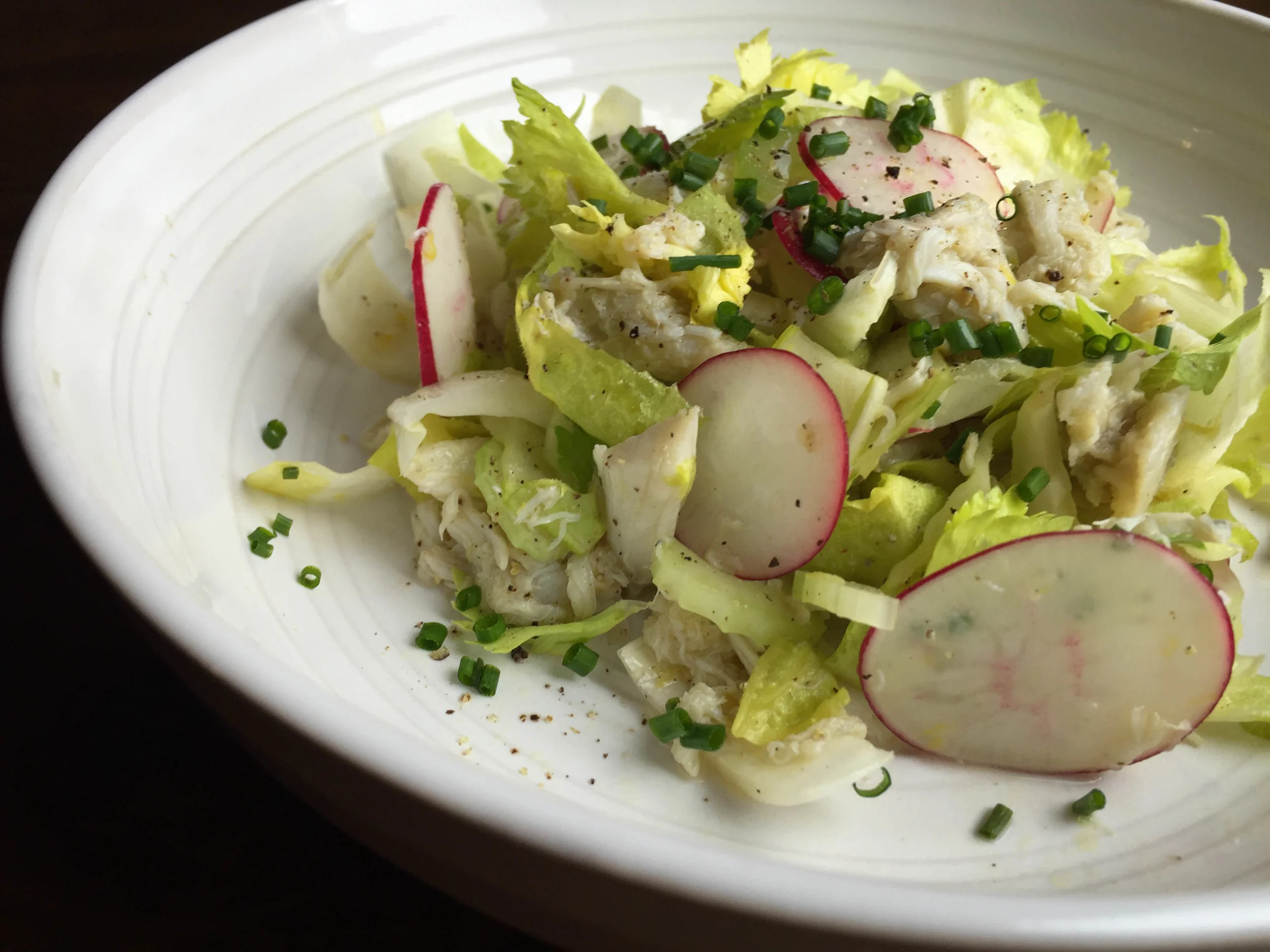So, how do the two fried rices stack up?
Judging the smackdown
Deliciousness: The Mission Chinese Food Salt Cod Fried Rice was more luscious than the Lucky Peach Chinese Sausage Fried Rice, with bits of crunchy fish adding textural interest and serious umami; the Lucky Peach rice was a little drier, more like the classic good-bad Chinese food pork fried rice (PFR) I so fondly remember from childhood (down to the frozen peas), but with Chinese sausage in place of barbecue pork. Both had plenty of fluffy, moist egg. Of course the Mission Chinese entry involved Chinese sausage too, and even more of it; that one was more chock-a-block full of stuff – a bit more egg, plus the two kinds of fish. Both were truly delicious; both were perfectly seasoned. Minced garlic and ginger brought tasty dimension to the Lucky Peach rice, but I didn't miss them in the Mission Chinese Food rice, with all that fish-umami happening, plus the cilantro. The Mission Chinese Food fried rice was maybe just a little more strikingly fabulous. But I would happily eat a giant bowl of either one any day of the week.
Mission Chinese Food Salt Cod Fried Rice Deliciousness: 10/10
Lucky Peach Chinese Sausage Fried Rice Deliciousness: 9/10
Ease of preparation: No question, the Lucky Peach recipe was much simpler to prepare. Other than cooking the rice in advance, everything was prepped and cooked in about 20 minutes. The Mission Chinese Food recipe was extremely involved, thanks to soaking/water changing then frying and food processing the salt cod, and making the mackerel confit. While I loved eating the mackerel confit on its own (and will definitely make it again), it got a little lost in the rice. Did it add much to the whole? Hard to say. Neither recipe needed significant tweaking (the only issue in either was how much raw rice yields 3 cups cooked in the Mission Chinese recipe, which is really minor); both were clearly explained and very easy to follow – even with the hot wok going.
Mission Chinese Food Salt Cod Fried Rice Ease of Preparation: 6/10
Lucky Peach Chinese Sausage Fried Rice Ease of Preparation: 9/10
All-around awesomeness and wow factor: Both rate very highly. A steaming bowl of hot fried rice with fluffy egg and chewy, smoky Chinese sausage, excellent texture and flavor that you made yourself in your very own wok is terribly exciting and fabulous.
When Wylie came home for spring break and Thierry returned from France a couple days later, it was the first thing I made them. More on that later. After Wylie goes back to school, I'm thinking a batch of the Lucky Peach rice would be an absolutely dreamy thing to eat when Thierry and I are hunkered down in front of the TV to binge watch House of Cards or election returns. Will I ever make the Mission Chinese Food recipe again? Perhaps. But only if guests who really geek out over Chinese cooking come over. (Sherry and Fred: You are wanted in Dallas!) Otherwise, the Lucky Peach's simplicity-in-preparation quotient makes up for its slight fabulousness deficit in relation to the Mission Chinese Food recipe, creating – ladies and gentlemen – an all-around awesomeness dead heat.
Mission Chinese Food Salt Cod Fried Rice Awesomeness and Wow Factor: 9/10
Lucky Peach Chinese Sausage Fried Rice Awesomeness and Wow Factor: 9/10
Well, after all that, you might think I've had enough fried rice for the time being. You'd be wrong. Now I am consumed with creating the perfect fried rice recipe: one the marries maximum awesomeness and deliciousness with the minimum of effort and time. Interested? Be sure to check back soon!




































